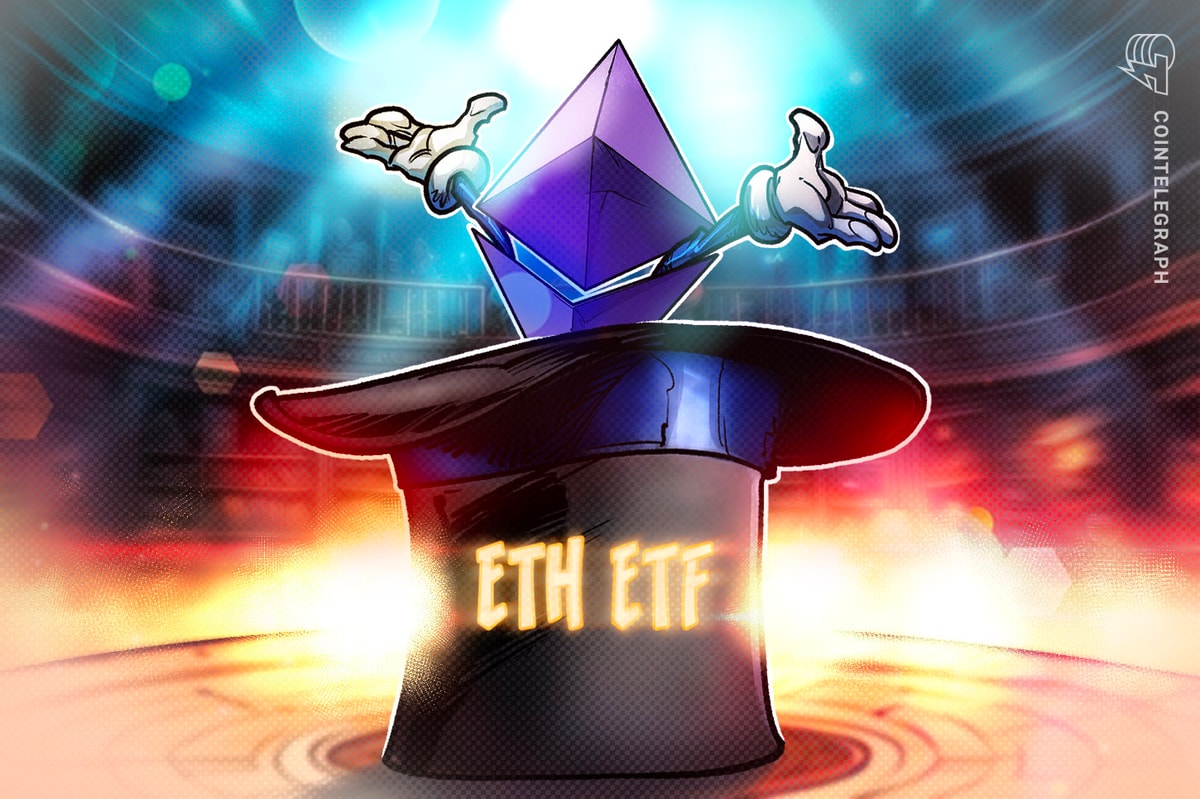
On May 23, the US Securities and Exchange Commission (SEC) gave the green light to Ethereum exchange-traded funds (ETFs), but actual trading of these instruments in US markets will take longer as the regulator has not yet approved each of the eight funds. Individual S-1 filings. Given the uncertainty, the price of Ethereum (ETH) has struggled to break past the $3,900 resistance, and the answer may lie in the Ethereum futures markets.
Uncertainty regarding Ethereum Spot ETF regarding launch date and potential outflows
Part of the discomfort among Ethereum investors, even those who assume the launch of active spot ETFs in the US is imminent, stems from the conversion of the Grayscale Ethereum Trust (ETHE) into a spot instrument. If the fund manager decides to keep its $11 billion fund fees at significantly higher levels than current levels, the likely outcome would reflect GBTC outflows from Grayscale, thus offsetting inflows from competitors including BlackRock, Fidelity, VanEck, and ARK 21Shares.
Some analysts have claimed that the SEC's decision to approve Ethereum's spot currency was heavily influenced by last-minute political pressure from Democrats to win over swing voters in the US presidential election next November. However, analysts noted that the SEC knew that the Ethereum instrument shared the same regulatory setup as Bitcoin ETFs, so according to Bernstein analysts, “the SEC took a more pragmatic approach and avoided the legal battle.”
Traders are debating whether bullish bets are being made through ETH derivatives markets or whether Ether's price has been artificially suppressed due to bets on the Ether ETF taking longer than expected. This uncertainty stems from mixed signals in the cryptocurrency market, in particular the recent actions of US President Joe Biden, who vetoed a congressional resolution aimed at repealing the SEC’s SAB 121 guidance, raising concerns about the environment. Cryptocurrency regulatory.
It is almost impossible to predict how long it will take for the SEC to approve the S-1 filings needed for every Ethereum ETF, so attention must turn to trading metrics to understand whether traders tend to bear down after several failed attempts to keep prices above… $3900. Perpetual contracts, also known as inverse swaps, include a built-in rate that is recalculated every eight hours. In short, a positive rate indicates a preference for using higher leverage by buyers(s).
Aside from a brief spike near 0.03% per 8 hours on May 21, which equates to 0.6% weekly, Ethereum's leveraged funding cost was minimal, meaning there was a balanced demand between long and short trades using perpetual contracts.
ETH monthly futures reflect investor optimism that is slowly fading
To rule out externalities specific to perpetual contracts, one should monitor the ETH monthly futures annual premium (base rate). These contracts rarely track the spot price of ether, as their longer settlement period leaves sellers demanding a premium of 5% to 10%. However, in periods of excitement, this spread can easily reach 20% as buyers are willing to pay a higher premium for leverage.

The monthly Ethereum futures premium rose to 15% on May 21 after the price of Ethereum rose to $3,800. However, the moderate optimism began to fade on June 3 as the index returned to 13%, which is still slightly above the neutral threshold but not a sign of upside in the short term.
Related: Who rules Ethereum? Galaxy report reveals everything
This data does not necessarily mean that investors are not confident in the immediate launch of an Ethereum ETF, given the stricter regulations around the world. For example, Hong Kong has banned unlicensed exchanges in the region, Paraguay has confiscated unregistered cryptocurrency mining equipment, and two US senators have claimed that Iran is using digital assets to bypass sanctions, including funding terrorist organizations.
Currently, ETH derivatives reflect low confidence in strong net inflows of US ETFs, regardless of whether the reason is delays in S-1 approval from the regulator or fear of outflows from Grayscale's ETHE instrument. Therefore, the odds of a rally above $4,000 in the near term are slim according to ETH futures pricing.
This article is for general information purposes and is not intended and should not be taken as legal or investment advice. The views, thoughts and opinions expressed herein are those of the author alone and do not necessarily reflect or represent the views and opinions of Cointelegraph.







